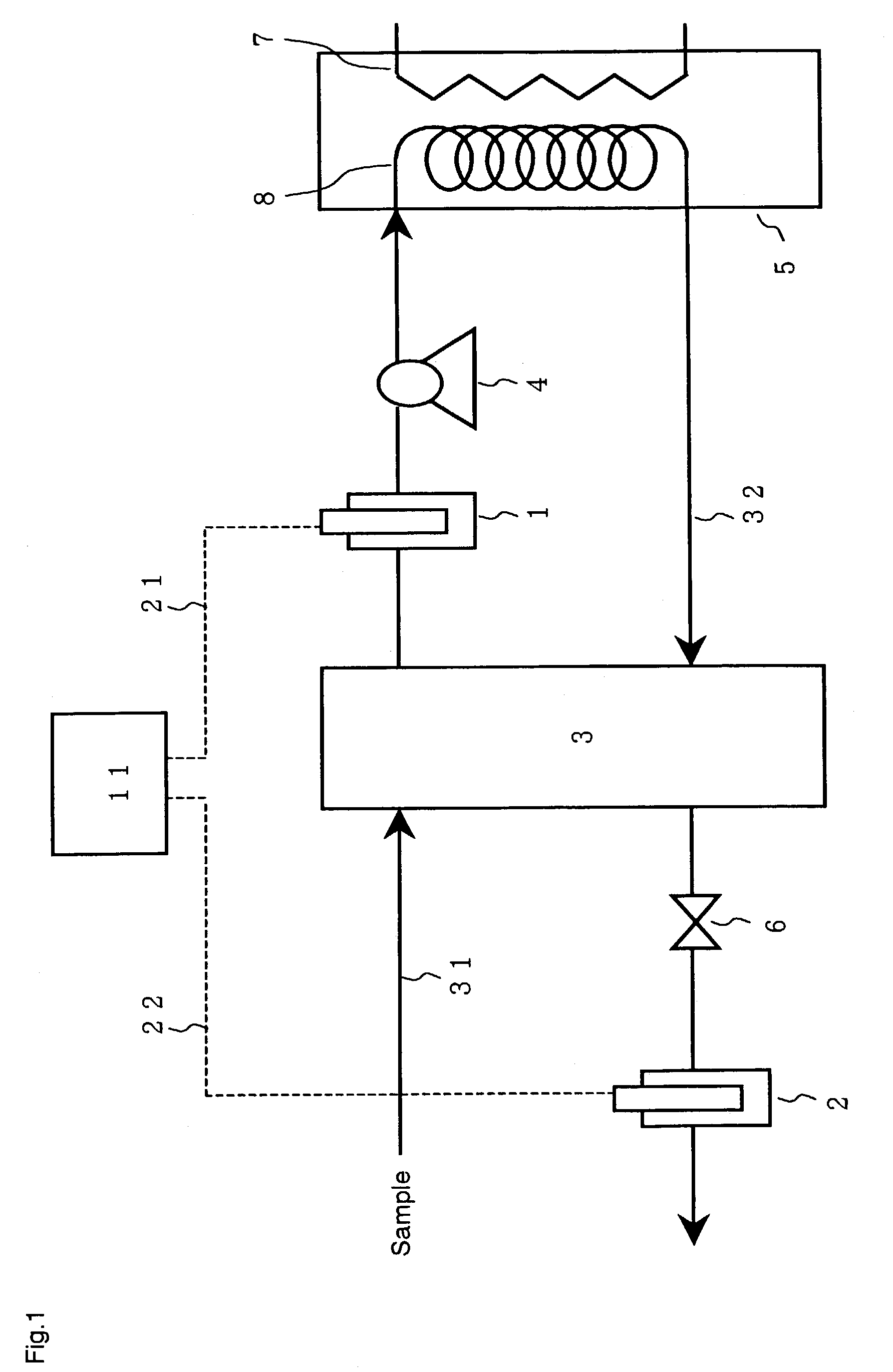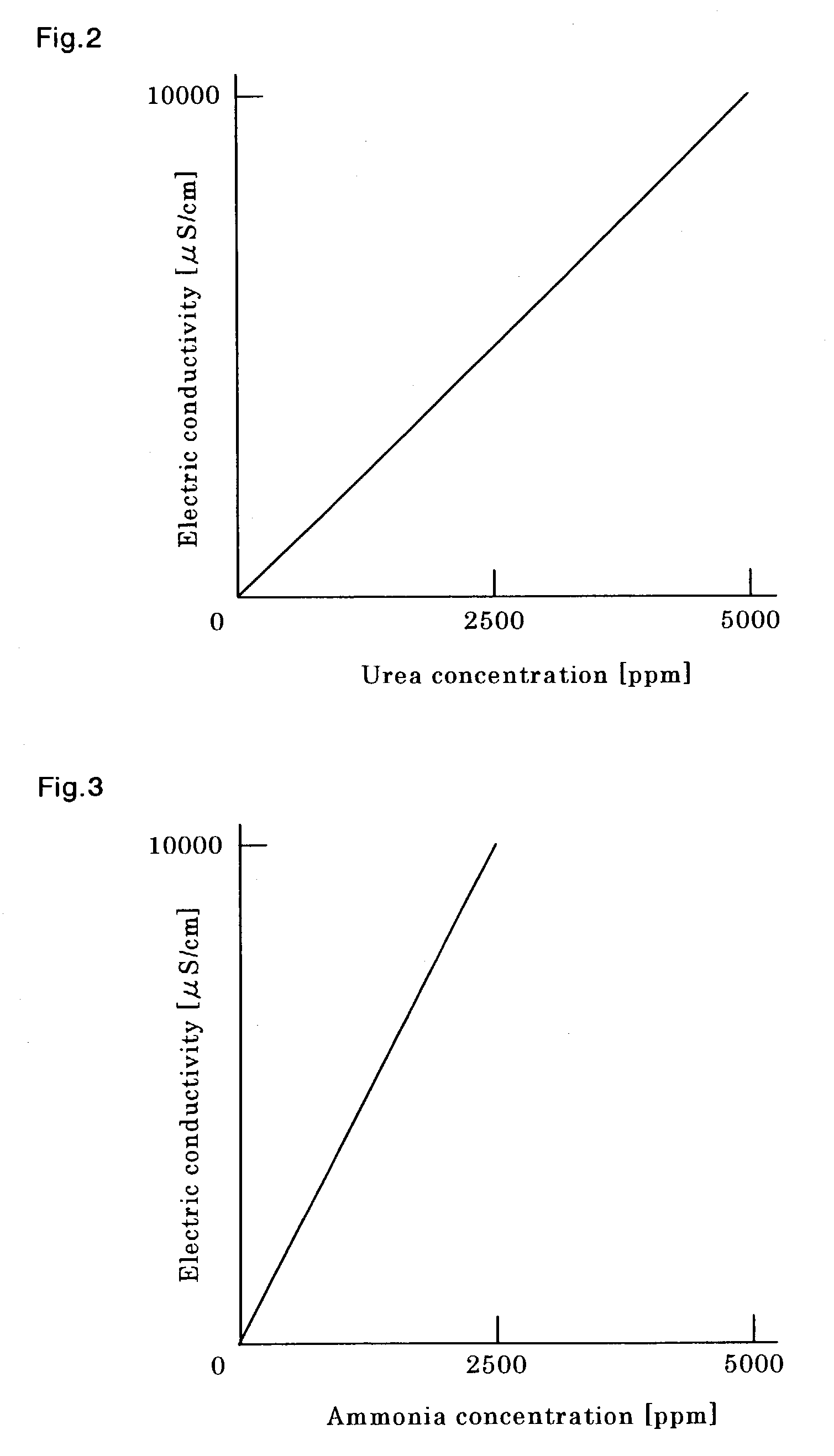Method and apparatus for determining urea concentration
a technology of urea concentration and method, applied in the direction of material electrochemical variables, instruments, and investigation of phase/state change, etc., can solve the problems of inability to selectively determine a urea concentration, affecting the correct determination of urea concentration, and requiring additional work in the creation of calibration curves
- Summary
- Abstract
- Description
- Claims
- Application Information
AI Technical Summary
Benefits of technology
Problems solved by technology
Method used
Image
Examples
example 1
[0065]In the apparatus shown in FIG. 1, the sensors 1 and 2 were conductivity meters from HORIBA Inc. (Model: TD-920). The cooling means 3 was a cooler using water. The pressurizing means 4 was a metering pump from Nippon Seimitsu Kagaku Inc. (Model: NR-S-702). The heating means in the reactor 5 was an electric heater, and a coiled stainless tube was placed in the reactor as the reaction vessel 8. All the pipes in the apparatus were made of stainless steel. The pressure-retaining means 6 was a commercially available pressure regulator that may be used for an ammonia-containing solution.
[0066]In this apparatus, a part of a solution containing ammonia and urea from a condensate facility in a urea production process was fed through a line 31 into the cooler at a rate of 10 mL / min. The sample solution was cooled to 25° C. and electric conductivity χ′ was then determined by the sensor 1. The solution was subsequently introduced into the reactor while being pressurized to 2.5 MPaG by the ...
reference example 1
[0071]Electric conductivity χ′ was determined by the sensor 1 as described in Example 1 for an ammonia-containing aqueous solution that contained no substances, other than ammonia, that may influence electric conductivity. As a result, the ammonia concentration was determined to be 10 ppm. For confirmation, the above solution was measured for its ammonia concentration by the indophenol method. These measurement results are shown in Table 2. As seen from Table 2, for an ammonia concentration, there is also good conformity between the measurement results according to this invention and those for confirmation.
example 2
[0072]Measurement was conducted for an aqueous solution containing urea in which substances influencing an electric conductivity other than urea are negligible under the apparatus / measurement conditions described in Example 1. As a result, urea concentration was determined to be 10 ppm. For confirmation, the above solution was measured for its urea concentration by PDBA colorimetry. These measurement results are shown in Table 2. As seen from Table 2, there is good conformity between the measurement results according to this invention and those for confirmation, indicating that the measuring method and the apparatus according to this invention are effective.
PUM
| Property | Measurement | Unit |
|---|---|---|
| temperature | aaaaa | aaaaa |
| temperature | aaaaa | aaaaa |
| electric conductivity | aaaaa | aaaaa |
Abstract
Description
Claims
Application Information
 Login to View More
Login to View More - R&D
- Intellectual Property
- Life Sciences
- Materials
- Tech Scout
- Unparalleled Data Quality
- Higher Quality Content
- 60% Fewer Hallucinations
Browse by: Latest US Patents, China's latest patents, Technical Efficacy Thesaurus, Application Domain, Technology Topic, Popular Technical Reports.
© 2025 PatSnap. All rights reserved.Legal|Privacy policy|Modern Slavery Act Transparency Statement|Sitemap|About US| Contact US: help@patsnap.com



